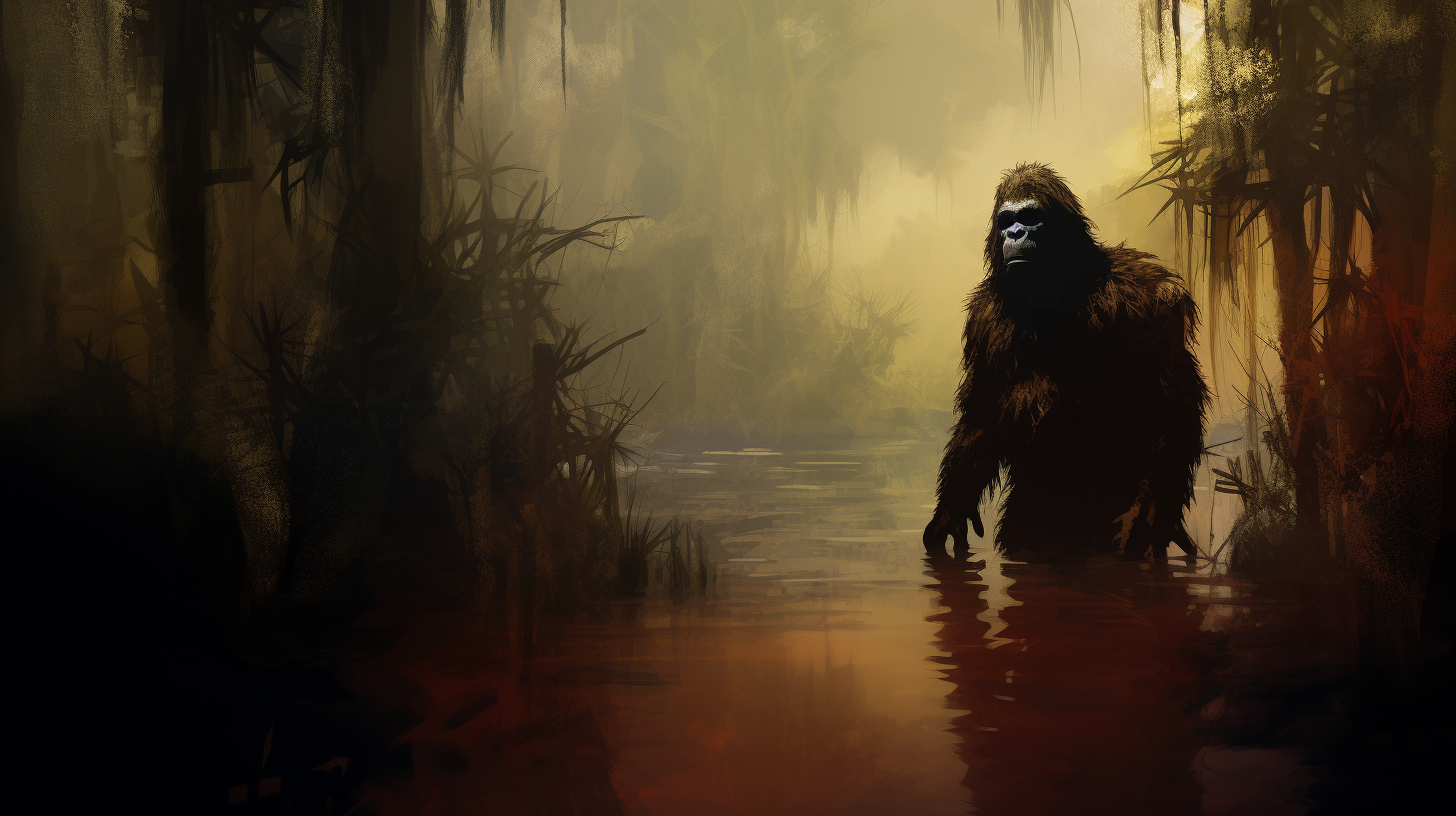Bigfoot, a mysterious and legendary creature, is known to dwell deep within forests across the globe, especially in the Pacific Northwest region of the United States.
The intrigue surrounding these elusive beings often leaves us questioning their existence and the numerous different species that have been reported worldwide.
While many of us are familiar with the well-known Sasquatch, you may be surprised to learn about the variety of Bigfoot-types that have been spotted and documented across different continents.
In this guide, we will explore the fascinating world of Bigfoot and its relatives, examining the distinct characteristics and behaviors exhibited by these enigmatic creatures.
From the snowy reaches of Siberia to the lush forests of Australia, you’ll be amazed at the range and diversity of these extraordinary beings.
So, let’s embark on a journey to uncover the truth about these legendary denizens of the wild and discover 10 surprising facts about Bigfoot you might not have known before.
As we dive into the different species of Bigfoot across the world, prepare to expand your understanding of these legendary creatures and the fascinating folklore surrounding them.
So get ready to look beyond the tall tales and examine the evidence that might just prove the existence of Bigfoot – in all its various forms – once and for all.
North American Bigfoot
Sasquatch in the Pacific Northwest
The Sasquatch, also known as Bigfoot, is a large, hairy, and mysterious creature often sighted in the Pacific Northwest region of North America.
Reports describe it as standing over 7 feet tall, and it is known for its ape-like appearance and strong, unpleasant odor. Native American folklore is rich with stories about this elusive being, which they respect and fear. This region has the highest concentration of Bigfoot sightings in the United States.
Florida’s Skunk Ape
The Skunk Ape, another variation of Bigfoot, is often spotted in the swamps and forests of Florida.
Named for its strong, skunk-like odor, the Skunk Ape is said to stand between 5 to 7 feet tall with reddish hair covering its body. Its sightings have continued for years, fueling ongoing debate in the scientific community.
Fouke Monster of the Southeast United States
In the rural areas of the southeastern United States, the legend of the Fouke Monster is well-known. This creature is said to be hairy, tall, and bipedal, much like its Bigfoot and Sasquatch counterparts. However, its overall appearance – including its glowing red eyes – seems to differ a bit and takes a starring role in many local stories. The origins of the Fouke Monster are heavily rooted in Native American folklore.
Wendigo: Myth and Mystery
The Wendigo, originating from Algonquian Native American mythology, is different from the other entities mentioned. This mythical creature is often depicted as a skeletal, gaunt humanoid with antlers or horns on its head. Though it bears little physical resemblance to Bigfoot or Sasquatch, its connection to the lore and mysteries surrounding mysterious beings cannot be ignored.
Asian Variations

Yeti: The Abominable Snowman
The Yeti, also known as the Abominable Snowman, is believed to inhabit the snowy mountains of Nepal, Tibet, and Bhutan.
The legend of the Yeti has intrigued the world for centuries. The British mountaineer Eric Shipton discovered a mysterious footprint in the snow on an expedition in 1951, further fueling the Yeti’s mystique.
Yeren: China’s Wild Man
In China, a creature called the Yeren, or China’s Wild Man, is said to inhabit vast forested regions.
Similar to Bigfoot and the Yeti, the Yeren is a bipedal, ape-like creature covered in thick hair. Although obscure, several eyewitness accounts have reported sightings of the Yeren, sparking interest in its existence among locals and researchers alike.
Almas: The Wild Man of Central Asia
The Almas, or the Wild Man of Central Asia, is said to dwell in the mountainous regions of Mongolia and Kazakhstan.
Similar to its cousins, the Almas is a bipedal, hairy creature. While sightings are rare, the Almas has become a part of local folklore and is believed to be both elusive and intelligent. As with other variations, definitive evidence for the Almas has yet to be discovered.
Chuchunaa: Siberia’s Bigfoot
Finally, the Chuchunaa is a Bigfoot-like creature inhabiting the remote areas of Siberia.
The Chuchunaa is described as a tall, muscular biped enveloped in dark hair. Intriguingly, the Chuchunaa is said to possess more human-like characteristics than its counterparts. Stories of the Chuchunaa’s encounters are quite rare, adding an air of mystery to its existence.
These Asian variations of Bigfoot are unique and fascinating examples of cryptid creatures within their respective regions. While the search for concrete evidence continues, the stories and legends persist in capturing the imagination of those who hear them.
Australian and Indonesian Bigfoot-Like Creatures
Yowie: Australia’s Hairy Man
The Yowie is a mysterious creature believed to inhabit the Australian outback. Descriptions vary, but it’s generally considered to be a large, hairy, ape-like creature with human-like features.
Sightings of the Yowie have been reported across Australia, sparking debate among experts and enthusiasts about its existence. Some believe the Yowie is a yet-to-be-discovered species of primate, while others attribute sightings to misidentification or hoaxes. More information about the Yowie can be found at this website.
Ebu Gogo: Indonesia’s Small Yet Fierce Humanoid
In Indonesian folklore, the Ebu Gogo are small humanoid creatures known for their mischievous and sometimes aggressive behavior. They are said to inhabit the forests of Indonesia, particularly on the island of Flores.
Standing between 2-3 feet tall, these creatures are often described as having hairy bodies, long arms, and distinct human-like features. Local legends suggest that the Ebu Gogo possess a level of intelligence slightly below that of humans, allowing them to mimic human speech and use simple tools.
Orang Pendek: Sumatra’s Upright Ape
The Orang Pendek, or “short person” in Indonesian, is another Bigfoot-like creature reported in the forests of Sumatra. This elusive cryptid is said to stand approximately 3-5 feet tall and walk upright on two legs like a human.
Descriptions of the Orang Pendek often include long, powerful arms, a stocky build, and a short coat of dark hair. Locals and researchers alike have reported sightings and encounters with the creature for centuries. The Orang Pendek is believed by some to be a yet-to-be-discovered primate species, while skeptics argue that sightings can be attributed to known animals such as gibbons or sun bears.
Additional Bigfoot Research

Researchers around the globe have been captivated by Bigfoot sightings and encounters for decades. These elusive creatures often leave very little evidence behind, but dedicated trackers have developed physical tracking techniques in an effort to gather more information and better understand their behavior.
One important study on Bigfoot is the Oxford-Lausanne Homonid Project, which brought together experts from various fields to examine samples collected from alleged Bigfoot encounters.
Collaboration between researchers is key to understanding these mysterious creatures, and this project serves as a significant milestone in Bigfoot research.
While it may sound far-fetched, even the FBI has a file on Bigfoot. Their involvement in the matter demonstrates that Bigfoot’s existence is a topic that continues to generate interest and debate at various levels.
Physical evidence, such as prints found in Skookum Meadows, WA, also contributes to the body of research on these creatures. Such findings help to validate the persistence of reports and sightings throughout the years, further fueling the quest for information.
In addition, researchers have delved into the study of Bigfoot’s vocalization patterns, analyzing recorded sounds to glean insights into their communication habits or possible social structure. This unique aspect of the Bigfoot phenomenon adds another layer to our understanding of these elusive beings.
As research continues and new evidence comes to light, our understanding of Bigfoot and its various species around the world will inevitably evolve. By combining efforts and sharing information, we may one day uncover the truth behind these enigmatic creatures.
Frequently Asked Questions
What are the most common Bigfoot species worldwide?
Bigfoot, also known as Sasquatch, is typically described as a large, ape-like creature that inhabits the forests of North America. There are several distinct Bigfoot species globally, including the Yeti in the Himalayas, the Yowie in Australia, and the Almas in Mongolia.
How do Bigfoot species vary in appearance and behavior?
Each Bigfoot species may have differences in appearance and behavior. Some might be larger, more aggressive, or have unique coloration or fur patterns. The behavior of these creatures can also vary, from nocturnal and shy to aggressively territorial.
Which countries have their own unique Bigfoot creatures?
Many countries have their versions of Bigfoot creatures. For instance, the United States has the Sasquatch, Canada has the Windigo, Nepal and Tibet have the Yeti, Australia has the Yowie, and Mongolia has the Almas. These species are embedded in their respective cultures, often through folklore and legends.
What’s the difference between Sasquatch, Yeti, and Yowie?
Sasquatch, or Bigfoot, is primarily known to inhabit the forests of North America and has a bulky, ape-like appearance. The Yeti or the Abominable Snowman is found in the Himalayas and is usually described as having white or gray fur, while the Yowie in Australia is considered more aggressive and has distinct facial features.
Are there any similarities between Bigfoot species across the globe?
Despite the differences in appearance and behavior, all Bigfoot species share some common traits such as massive size, bipedal walking, and mysteriousness in their sightings. Their elusive nature has led to much debate and fascination among researchers and enthusiasts worldwide.
Have any Bigfoot species ever been scientifically proven to exist?
As of now, there is no concrete, scientific evidence that proves the existence of any Bigfoot species. Most evidence comes in the form of eyewitness accounts, footprint casts, and occasional photos and videos. The study of these elusive creatures continues to intrigue researchers, and the debate over their existence remains unresolved.

